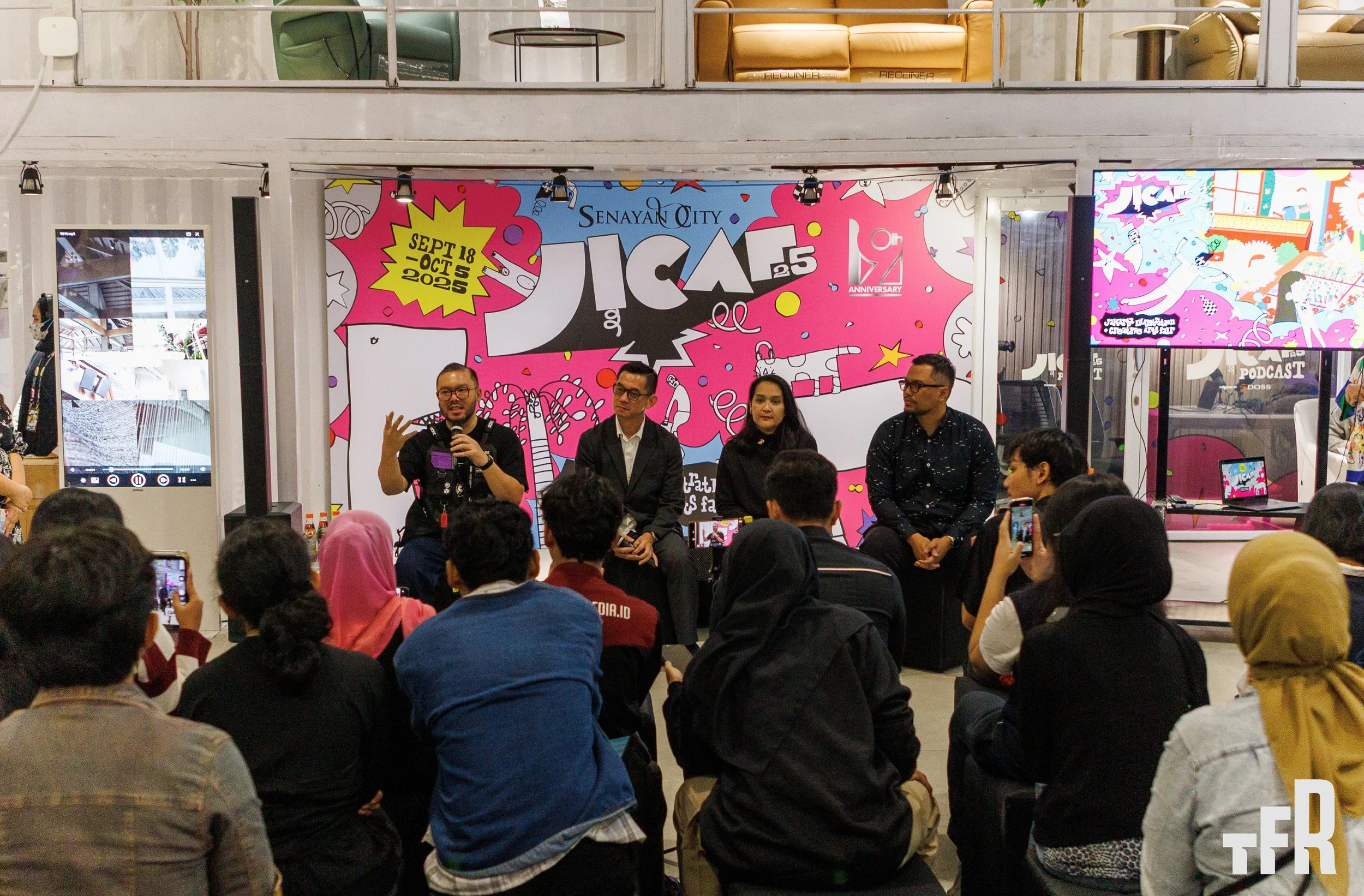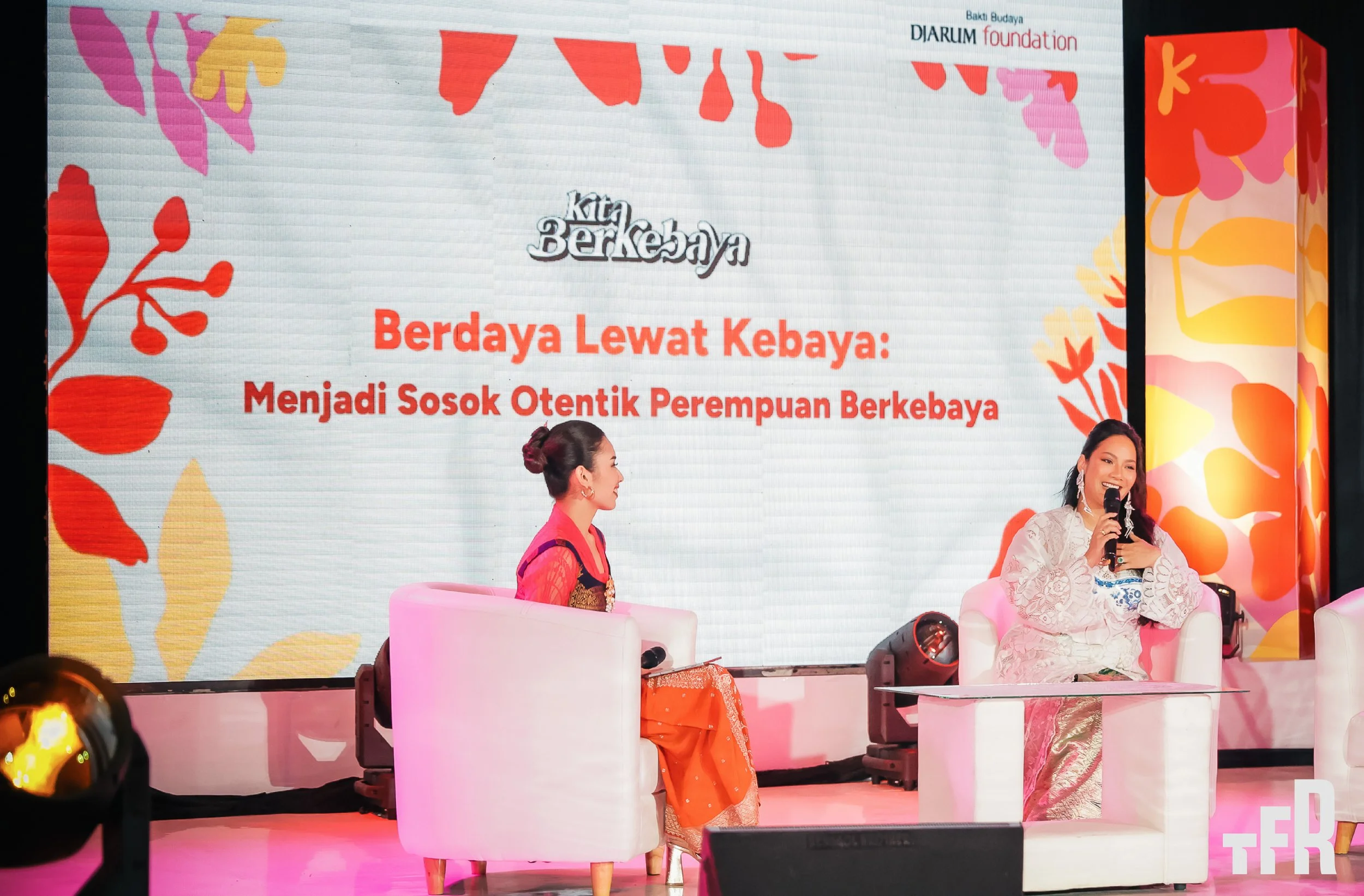Art and disabilities, the importance of empowerment and inclusive creative spaces
Written by Haiza Putti | Read in Indonesian
Art and culture cannot be separated from people's lives. As stated by the British anthropologist Edward Burnett Tylor, art is one of the cultural products resulting from people's efforts to survive.
Yet, with the development of art and the view of ableism as stated in the paper “About inclusivity: Is there room for people with disabilities in art and culture?”, there are views and practices in art that seem so exclusive for the majority (people with no disabilities).
However, in the past few years, individual and community initiatives have proven that there is a place for persons with disabilities to do art. Likewise, there is a real role for art to be one of the supporters of the empowerment of persons with disabilities.
On this basis, TFR took part in the Open Arms research project by Selasar Sunaryo Foundation to examine the relationship between art and disability in several cities that act as the centre for art in Indonesia. TFR curated a series of initiatives that emerged in these cities and proved the limitless efforts to empower persons with disabilities through art and efforts to increase accessibility in art spaces.
Also read: Open Arms workshops bring inclusivity for artists with disabilities
A studio that connects illustrators with disabilities with clients in Bandung
Bandung is not only known as the City of Flowers, but also as the birthplace of some prominent artists and musicians in the country. It is also the city where social enterprise Tab Space was founded. Located on Jl. Braga, Tab Space was established in 2022 and has the goal of empowering illustrators with disabilities, demonstrating their role in the community ecosystem, as well as enabling them to earn income.
Tab Space believes that like other individuals, artists with disabilities can become professionals with the right support system that nurtures their interests and talents. That is why in its programmes, Tab Space focuses on maximising the works of persons with disabilities and promoting them so that their works have a selling value.
One of its efforts is connecting artists with disabilities to potential clients, and Tab Space guides the discussion process.
To support the strategy, Tab Space has a work space, encouraging artists with disabilities to exhibit their works, sell merchandise and take part in art competitions.
Creative spaces for persons with disabilities in Yogyakarta
Yogyakarta has seen the emergence of many initiatives that accommodate artists with disabilities. One of them is Jogja Disability Art (JDA) which has a vision to realise a full participation and equal opportunities for persons with disabilities in the field of art and culture at the national and international levels.
JDA implements this vision through a wide range of programmes, including regular exhibitions that not only involve artists with disabilities from Yogyakarta, but also from various regions in Indonesia and abroad.
Last year, in commemoration of International Day of Disabilities 2022, JDA held an exhibition themed "Suluh Sumurup" at the RJ Katamsi Gallery (ISI Yogyakarta). The event involved several disability communities in the field of fine arts, such as AndArt, Difalitera, Kembang Selatan, Pen Pals, as well as PSPSR UGM.
Yogyakarta is also home to Bawayang, an association that facilitates persons with disabilities, especially Deaf. However, as an inclusive community, Bawayang is open to anyone, including blind, persons with physical disabilities, achondroplastic, as well as persons without disabilities.
In fostering the creativity of Deaf artists, Bawayang holds various activities, such as pantomime performance, theatre, hip-hop and sign language classes.
Bawayang is accompanied by artist Broto Wijayanto, the initiator of the Deaf Art Community which accommodates Deaf in the field of art and was established in 2004. Bawayang’s goal is to pave the way for artists with disabilities, especially Deaf artists, to continue growing through art.
Also read: Can people with color blindness study art and design?
Inclusive initiatives on the Island of the Gods
Established in 2016, Rumah Berdaya has become a rehabilitation centre for people with schizophrenia (ODS) in Denpasar, Bali. Supported by the Denpasar City Social Agency, Rumah Berdaya has rehabilitated 50 ODS until they can live independently. Today, 30 ODS are still in the rehabilitation process.
Rumah Berdaya is a programme initiated by mental health specialist dr. Rai, SpKj with artist Budi Agung Kuswara, the founder of the Ketemu Project. In 2015, they organised the "Schizofriends Art Movement" programme which focused on developing the limitless creativity of ODS and encouraging them to interact with the wider community.
Budi said the rehabilitation concept of Rumah Berdaya is expected to increase the confidence of ODS after leaving the hospital and enabling them to return to society. Rumah Berdaya also has the ambition to change the public stigma towards ODS through various art activities that it organises.
Rumah Berdaya is now managed by Nyoman Sudiasa, an artist and one of the ODS fostered by the institution. Rumah Berdaya has a variety of activities, such as job skills training and producing goods or services to be sold to the public.
Apart from Rumah Berdaya, there is also an initiative that focuses on empowering persons with vision loss. Rumah Teratai, founded in 2010 by Didon Kajeng, aims to improve the social and economic capabilities of its members through training and education that improve the skills and competencies of persons with vision loss in Bali.
Photo: Painting collection in Rumah Teratai | Open Arms
One of Rumah Teratai's unique programmes is painting skills class, which was started in 2018 and is routinely held once a week. Chairman of the Teratai Foundation Made Jerry Juliawan said the painters who held the class were initially at a loss about how to teach painting to persons with vision loss. However, the members proved that they can learn it slowly and the classes are running very well to this day.
Rumah Teratai seeks to break the stigma around persons with vision loss who, in general, are limited to working as musicians or masseurs. Thus, apart from art, Rumah Teratai also encourages its members to earn income, one of which is by starting a joint coffee shop business.
Also in Bali, Bhakti Senang Hati Foundation was founded in 2003 by persons with disabilities in Gianyar district. To this date, the foundation is still run by persons with disabilities and has around 120 members. The foundation also accommodates members from outside the island, such as Nias and Kupang.
Photo: Artworks by members of Bhakti Senang Hati Foundation | Open Arms
Sang Ayu Nyoman Puspa, one of the foundation's administrators, told TFR that they actively visit various areas in Bali and collect data on persons with disabilities. The foundation also holds classes to build the hard skills and soft skills of its members so that they can carry out activities independently.
One of the foundation’s programmes is skills classes, where members are taught painting, sculpting, knitting, sewing and various other skills. The foundation also holds music and dance classes. These classes are held every day, with volunteers and skilled members as the instructors.
In addition to visitor donations, the independently operating foundation earns income from the sale of artworks both directly and via consignment with other outlets in Bali. The Bhakti Senang Hati Foundation also often sells their works through bazaars, festivals and exhibitions.
Also read: Women and marginalised communities in the “male world” of the Indonesian punk scene
Unlimited efforts to realise inclusivity
Not only dedicated communities, several major institutions and events in Indonesia have also shown their efforts in building inclusive spaces for persons with disabilities.
One of them is Festival Bebas Batas (2018) which was held at the National Gallery. The festival, which featured international artists with disabilities such as CanDo Dance, celebrated the artworks of persons with disabilities, including in visual arts and music, theatre and dance, film, as well as public intervention arts.
There were also the 8th PENDIDIK Forum by Museum MACAN which provided a space for discussion about inclusive and accessible art education and ArtJog 2022 which provided sign language interpreter assistance for Deaf communities.
All these efforts not only show the potential of art as a pillar of the empowerment of persons with disabilities, but also how inclusive spaces can play a role in building a world of art that is inclusive for all.





















